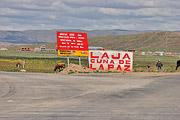Laja, Bolivia
A little town Laja is situated 36 km from La Paz at the height of 3960 m and a half-way to the archaeological complex, religious and cultural centre, ceremonial city of the ancient Incas – Tiwanaku. Due to the fact that the satellite-city of La Paz – El Alto with every passing year is faster and faster getting spread around the altiplano, just a few minutes after the city sheds stop running past and typical scenery of the Bolivian plain will start, in front, you will see a bifurcation with a big sign – «Laja – the Cradle of La-Paz.»
According to the April issue of Los Tiempos, around 16300 people live in the city. There are no places to have a snack and and spend a night, that is why majority of tourists come there just for half an hour on their way to Tiwanaku. In Laja there is only one public telephone, i.e. it is the most commonplace town – not spoiled by attracting new constructions for tourists.
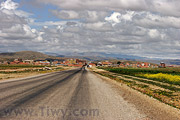
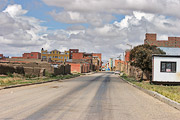
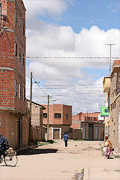
Unpretentious small town Laja is famous because it has become a «cradle» of the modern La Paz. Spanish captain-conquistador Alonzo de Mendoza while roaming in altiplano in search for a place for a new city to serve as a middle point on the road from Cusco and Arequipa to La Plata (nowadays it is called Sucre), made a stop in the village of aymara Indians, which is called Llaxa or Lappara. Some years before other conquistadors already settled nearby. Captain Alonzo de Mendoza liked the place and decided to hurry up – on October 20, 1548, he founded the city La Paz here.
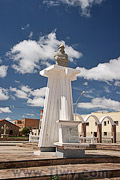
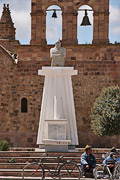
Because of this many years later they erected a monument to him on the main square.

↑ Click for detailed view ↑
Having spent 2 freezing nights in inhospitable altiplano, Alonzo de Mendoza continued his way and further he came across the depression Chuquiago. There were a lot of rivers there, not so cold and windy and there was a very beautiful view to the high mountain Illimani (6.5 thousand meters). Besides, there were villages of aymara Indians, who pastured llamas on the green meadows. Captain liked the new valley much more than in Laja, and he, without a moment's hesitation, «refounded» the city La Paz at the foot of Illimani, where it stands till present.
Probably, if captain Alonzo did not have a second thought, then now La Paz would have been on altiplano, and the satellite city El Bajo would be in the valley.
The town Laja is also famous for its ancient church at the main square. It comes into a traditional «visual set» of picture spread on Bolivia.
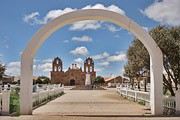
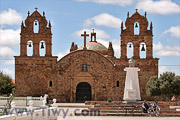
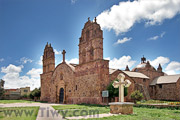
In 1545, 3 years prior to arrival of captain Alonzo, conquistadors started to built a church for their needs. More than a hundred years later, in 1860, the church was rebuilt and given the traits of the Renaissance architecture that could be seen even now. On the both sides of the entrance on facade there appeared columns with 4 reliefs – of monkeys and double-headed eagles. Eagles embodied a colonial symbol, monkeys – a thousand years old culture of the Andes. Such an architectural mongrel.
The church might have been reconstructed even later, as on one of the flat bell towers there is a stone inscription «1903».
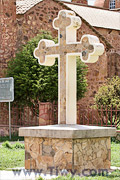
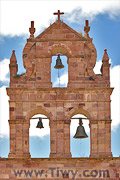
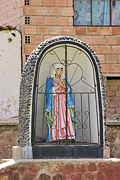
Among the residents of La Paz and El Alto the town Laja is famous for its bread, to be more exact for its flat cakes. The flat cakes, brought from Laja, in these cities are quickly sold away like hot pies on a fair day. I can advise the tourists not to buy bread near the access point (tranca de Laja) on the road to Tiwanaku, but to get only right in the town.
A more extensive panorama of the main square of Laja:

The last piece of advice: when you begin travelling on altiplano, you must use a wide-brimmed hat and sun glasses. The sun is mercilessly scorching. If you don't follow the advice, burnt skin and running eyes are guaranteed one hour later.

